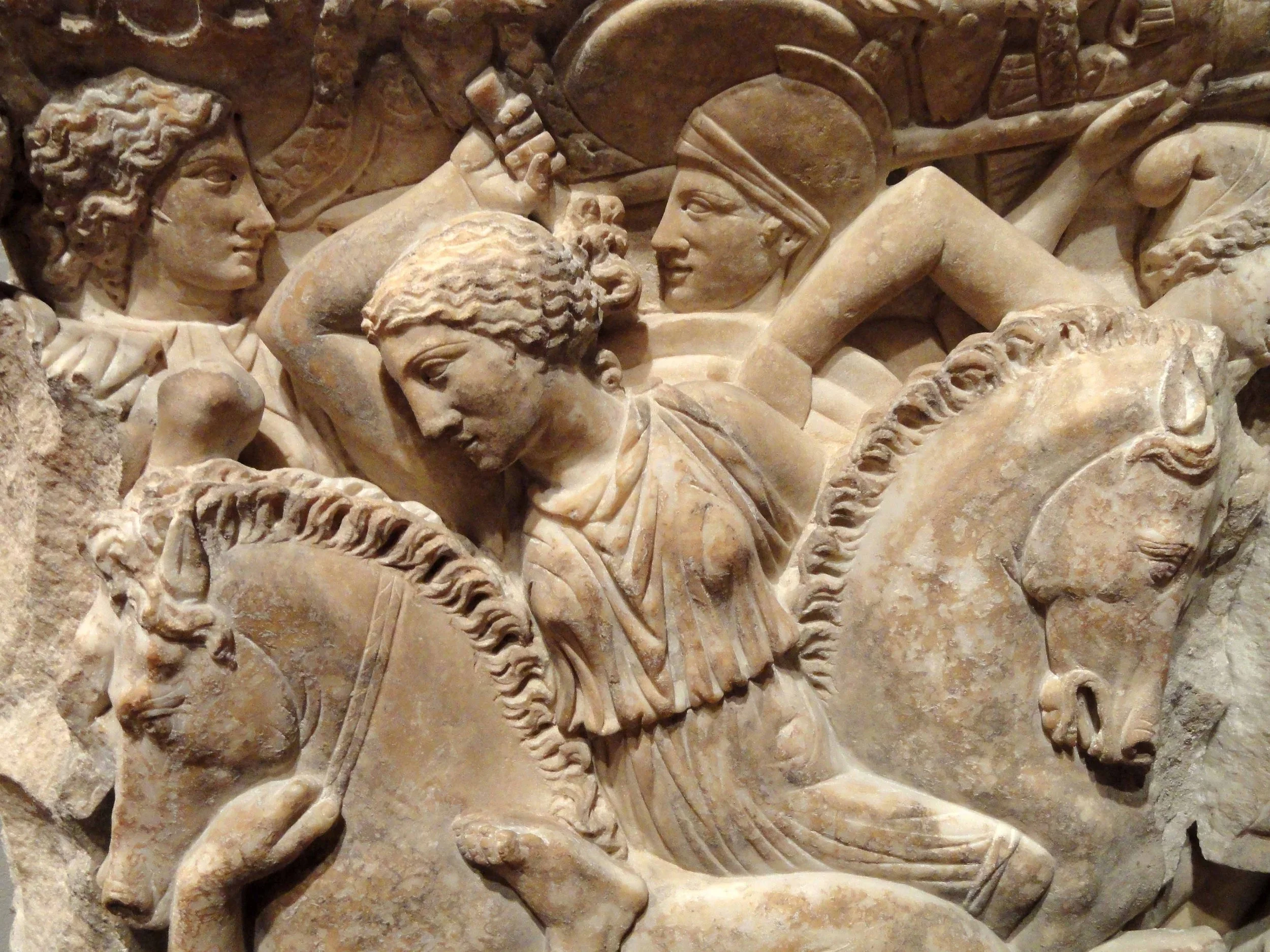Daughter of Attila
DAUGHTER OF ATTILA
The year is AD 450. From his glittering capital at Constantinople near the Black Sea, the emperor Theodosius holds sway over lands that extend from Egypt and Asia Minor to the barbarian borderlands of the north. Greek, not Latin, is the language of the Eastern Roman Empire, and allied kings send their sons and daughters to be educated in Constantinople as they had once been in Rome. But a dark shadow looms over this world, one that has rolled in with terrifying speed from the steppelands of the east and now threatens to engulf the empire – the shadow of Attila the Hun, who has only been kept at bay with gifts of gold. As Attila prepares for his final showdown with the Romans, those with wisdom look not to the men who hold power now but to the generation to come, to the young warriors and leaders who will shape the future – to Erecan, daughter of Attila, and her companions. This is their story …
Daughter of Attila is a novel about people on the cusp of adulthood who must navigate their way through a world fraught with danger and challenges, in an adventure that takes them from the forests and steppe to the Caspian Sea and the land of ice and snow far to the east. It is written for a young adult and an adult readership.
Daughter of Attila is available exclusively on Amazon as an ebook and a paperback. You can read a preview of the first chapters on Amazon.
The cover image
The cover image is from a sarcophagus showing an Amazonomachy, a fight between male Greek soldiers and female Amazon warriors, and probably dates to the third century AD. It represents a common theme in ancient art in which Greek or Roman soldiers are depicted fighting barbarians, of which the most feared were the Amazons. Erecan and her friends were the reality behind that myth - from cultures beyond the frontiers in which women were empowered as hunters and warriors. I chose this image because it is one of the finest depictions of a female warrior from antiquity and dates close to the time of Erecan. The sarcophagus was made from Pentelic marble, quarried near Athens, though the carving could have been done in one of the Roman cities of Asia Minor in the area of modern Turkey. It is on display in the Harvard Art Museums at Harvard University and you can see more images of it on their website (accession number 1899.9+1932.49, Harvard Art Museums/Arthur M. Sackler Museum, Gift of Edward W. Forbes; this photo credit Daderot, Creative Commons CC0 1.0 License with a waiver of copyright, Wikimedia).
This page will contain more images and additional material related to the novel over the next few months. If you have any questions about the novel after having read it, please don’t hesitate to contact me via my website and I’ll put anything of general interest that arises from that on this page. I hope you enjoy reading the novel!
This image a female Scythian archer, though dating almost a millennium before the setting in my novel, represents the Greek and Roman image of a female barbarian warrior that persisted throughout classical antiquity - including the composite bow that continued to be used by warriors from the eastern steppe in late antiquity (the interior of a cup by the Epiktetos Painter, Athens, late 6th century BC; © The Trustees of the British Museum. Shared under a Creative Commons Attribution-NonCommercial-Sharealike 4.0 (CC By-NC-SA 4.0) license).
